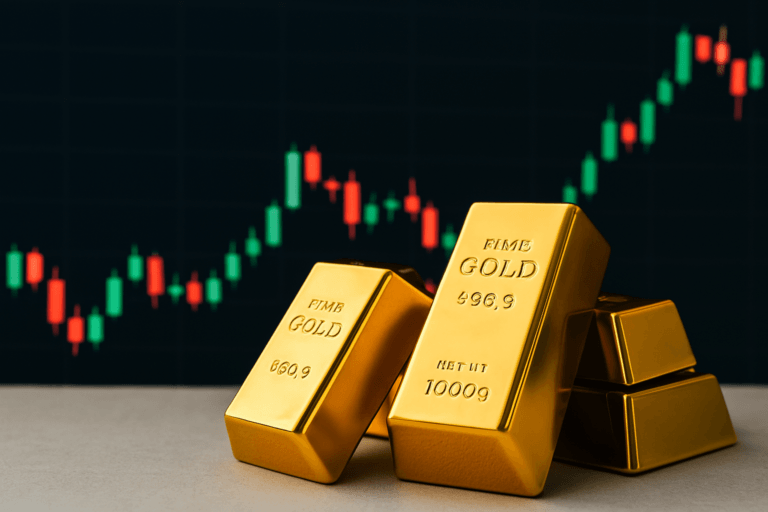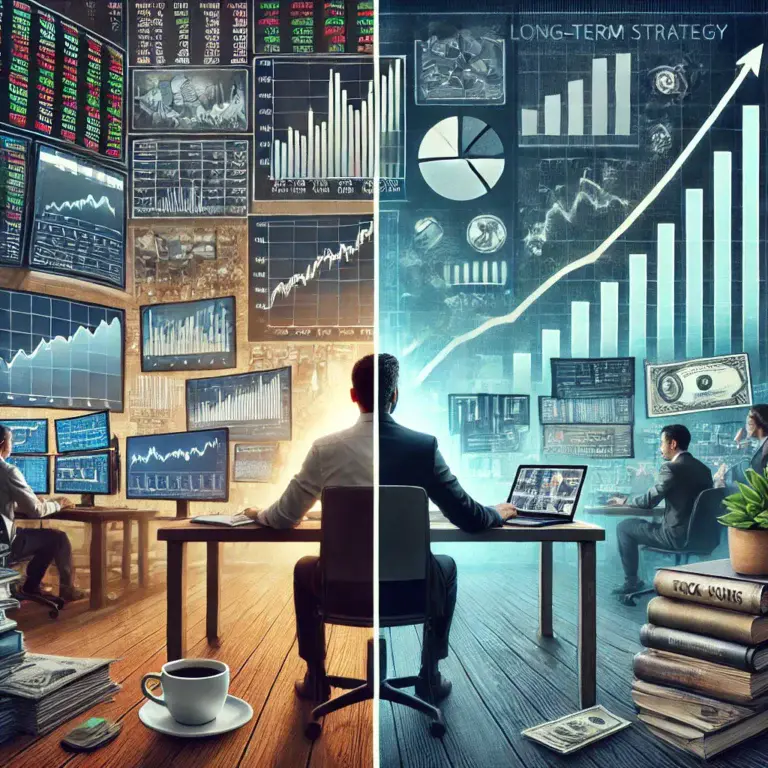Surge In Gold And Silver Prices
In recent days, the financial markets have witnessed a sharp increase in the prices of gold and silver, two metals that traditionally hold significant economic and symbolic value. This blog post delves into the reasons behind this surge, drawing on recent market trends, economic indicators, and geopolitical events to provide a comprehensive understanding of these movements.
Table of Contents
- 1. Global Economic Uncertainty
- 2. Inflation Hedge
- 3. Central Bank Purchases
- 4. Weak U.S. Dollar
- 5. Investor Demand and Market Speculation
- Spillover Effect from Gold to Silver
- Industrial Demand for Silver
- Safe Haven Asset
- Increased Investment in Silver ETFs
- Frequently Asked Questions (FAQs) about the Surge in Gold and Silver Prices
- Why do gold and silver prices rise during economic uncertainty?
- How does inflation affect the prices of gold and silver?
- What role do central banks play in the pricing of gold?
- Why does a weaker U.S. dollar lead to higher gold and silver prices?
- How do investor demand and market speculation impact gold and silver prices?
- Are there any risks to investing in gold and silver?
- Can industrial demand affect the price of silver?
1. Global Economic Uncertainty
The first and perhaps most compelling reason for the rise in gold prices is the increased global economic uncertainty. Gold has long been considered a “safe haven” asset, which means that during times of economic instability or volatility, investors flock to it as a store of value. Recent shifts in the global political landscape, including trade disputes, conflicts, and uncertainties about economic policies, have all contributed to this trend. This atmosphere of uncertainty pushes more investors towards gold, elevating its price as demand outstrips supply.
2. Inflation Hedge
Inflation significantly impacts the value of money and the real returns on most fixed-income investments. As prices rise, the real value of money falls, and so does the purchasing power of cash reserves. Gold is widely regarded as an effective hedge against inflation. Historically, its price tends to increase when inflation rises, preserving the capital in real terms.
With several central banks, notably the U.S. Federal Reserve, continuing to print money as a response to economic slowdowns, many investors expect inflation to increase, which has driven them to invest in gold to protect their assets.
3. Central Bank Purchases
Another driving factor behind the recent gold price increase is the aggressive purchasing by central banks across the globe. Central banks use gold as part of their foreign exchange reserves to hedge against risks associated with fiat currencies. This trend has been particularly noticeable in nations looking to reduce their dependence on the U.S. dollar amid ongoing geopolitical tensions and trade wars.
Countries like Russia and China have been increasing their gold reserves, signaling a strategic move towards asset diversification. This sustained buying pressure from central banks bolsters gold prices on a global scale.
4. Weak U.S. Dollar
Gold and the U.S. dollar typically have an inverse relationship. When the dollar weakens, gold prices tend to rise. The rationale behind this is straightforward: as the value of the dollar decreases, it takes more dollars to buy the same amount of gold.
In recent months, the dollar has shown signs of weakness due to several factors, including lower interest rates in the U.S., increasing national debt, and the aforementioned inflationary pressures. This depreciation has made gold cheaper for holders of other currencies, boosting international demand and pushing prices up.
5. Investor Demand and Market Speculation
The final piece of the puzzle in understanding the rise in gold prices is the increase in investor demand coupled with market speculation.
The introduction and growth of gold-backed exchange-traded funds (ETFs) have made it easier for investors to gain exposure to gold without the need to hold the physical metal. These financial instruments have seen significant inflows, particularly from institutional investors who view gold as a necessary component of a diversified investment portfolio. Furthermore, speculative trading in futures markets has also played a role, with many traders betting on future price increases.
Spillover Effect from Gold to Silver
Silver, while distinct in its industrial applications, often tracks the price movements of gold due to its monetary qualities. As gold prices increase, investors and speculators often turn to silver as a more affordable alternative, which can lead to price increases in silver as well.
Industrial Demand for Silver
Unlike gold, silver has extensive industrial uses, particularly in the electronics and photovoltaic (solar energy) industries. The demand for these products can influence silver prices significantly. Any growth in these sectors can lead to an increase in the demand for silver, pushing its price higher.
Safe Haven Asset
Like gold, silver is considered a safe haven in times of economic uncertainty. Although not as prominent as gold, silver’s role as a financial asset becomes more pronounced during times of volatility, contributing to its price increase.
Increased Investment in Silver ETFs
Investment in silver exchange-traded funds has also seen a rise, paralleling the trend in gold investments. These funds provide an easy way for investors to gain exposure to silver without the need to handle physical metal, increasing the accessibility and attractiveness of silver as an investment.
This analysis of the factors driving the recent increases in gold and silver prices highlights the complexity of commodity markets and the interplay of various economic, political, and speculative elements.
Investors considering gold or silver as part of their portfolios should weigh these factors carefully and consider the timing and scale of their investments in relation to their overall investment strategy and risk tolerance.
Frequently Asked Questions (FAQs) about the Surge in Gold and Silver Prices
Why do gold and silver prices rise during economic uncertainty?
Gold and silver are considered safe-haven assets, which means that during times of economic uncertainty or instability, investors tend to move their investments from riskier assets like stocks to gold and silver. This shift increases demand, pushing up the prices of these metals. The perception of gold and silver as stores of value during turbulent times contributes significantly to this trend.
How does inflation affect the prices of gold and silver?
Inflation erodes the value of money and decreases the purchasing power of currency. Gold and silver are often used as hedges (use our Gold and Silver Hedge Calculator) against inflation because their prices tend to rise when inflation increases, which helps preserve the real value of an investor’s wealth. This characteristic makes them attractive assets during high inflation periods.
What role do central banks play in the pricing of gold?
Central banks hold significant reserves of gold and can influence market prices through their buying and selling activities. By increasing their gold reserves, central banks can drive up demand and prices. This is often part of a broader strategy to diversify their reserves and reduce reliance on fiat currencies like the U.S. dollar.
Why does a weaker U.S. dollar lead to higher gold and silver prices?
Gold and silver are priced in U.S. dollars, so when the dollar weakens, it makes these metals cheaper for investors holding other currencies. This increased affordability can lead to higher demand from international buyers, thereby driving up prices.
How do investor demand and market speculation impact gold and silver prices?
Investor demand can vary based on economic indicators, market conditions, and geopolitical events. Speculative actions by investors, including those trading futures and options, can also lead to rapid price changes. For example, if a large number of investors believe that the prices of gold and silver will rise, their buying can actually drive prices up due to increased demand.
Are there any risks to investing in gold and silver?
Like all investments, gold and silver carry risks. Prices can be volatile, and there are no guarantees of profitability. The timing of purchases and sales can significantly affect investment outcomes. Additionally, holding physical gold or silver can incur storage and insurance costs. Investors should carefully consider their investment objectives and risk tolerance before investing in precious metals.
Can industrial demand affect the price of silver?
Yes, silver has numerous industrial applications, especially in the electronics and solar industries. Increases in industrial demand can lead to higher silver prices, particularly when combined with investment demand. Fluctuations in industrial output can directly impact the price of silver.

Karen Newton is a Business and Wealth Strategist, 3x International Bestselling Author, and founder of Karen Newton International. She combines practical experience with AI-Powered Entrepreneurship to help smart entrepreneurs build online income, invest strategically, and create long-term wealth through business growth, investments and joint ventures.







